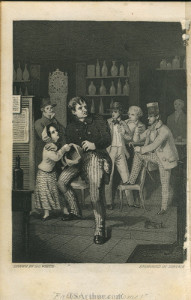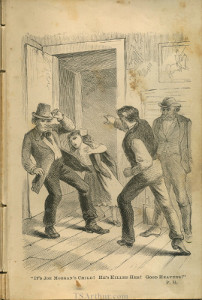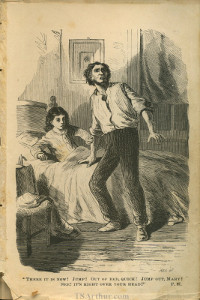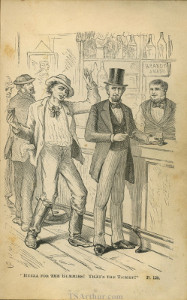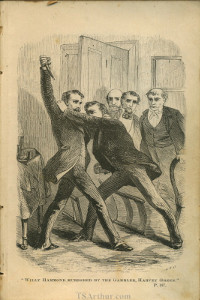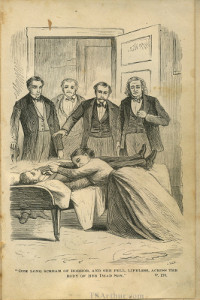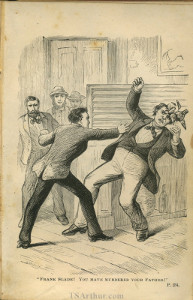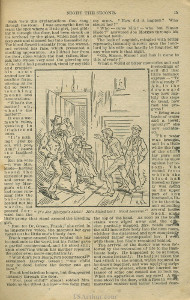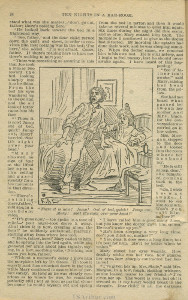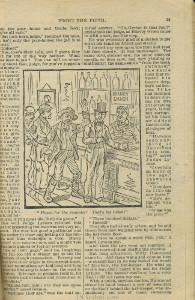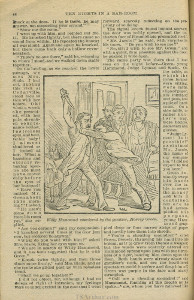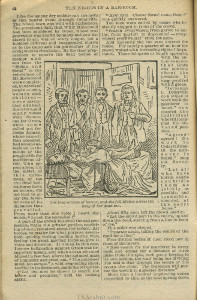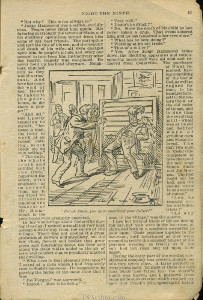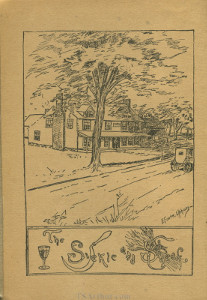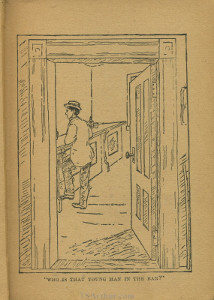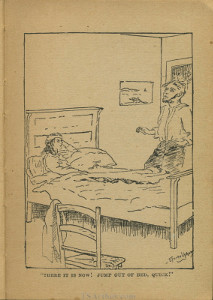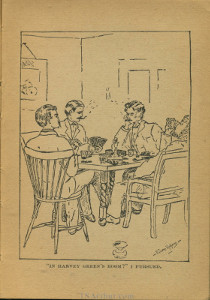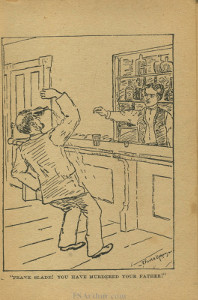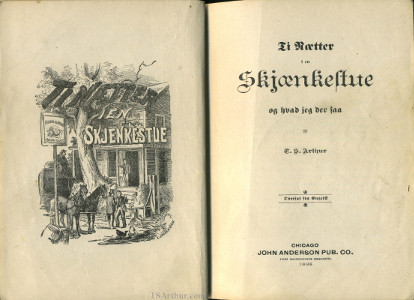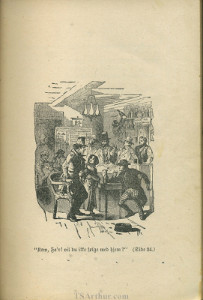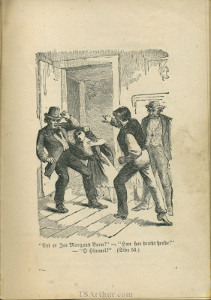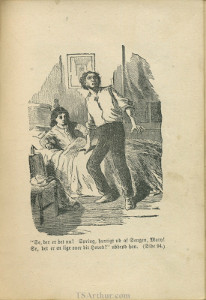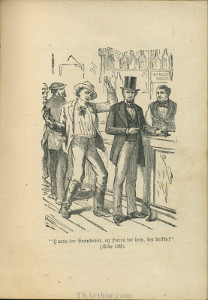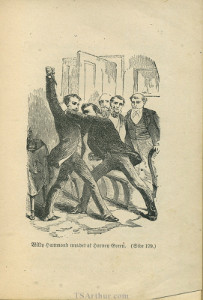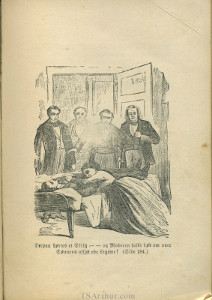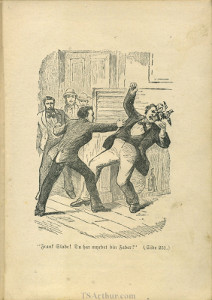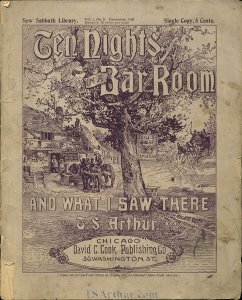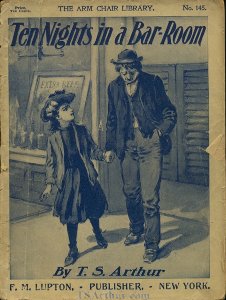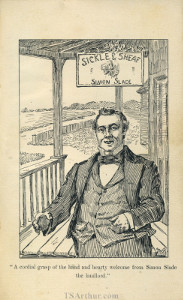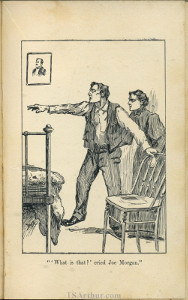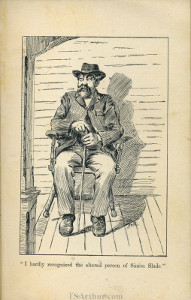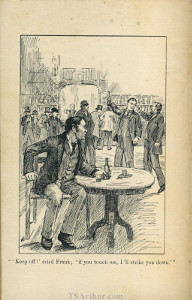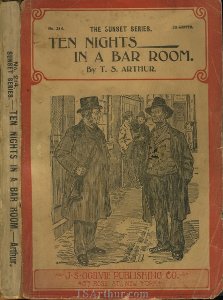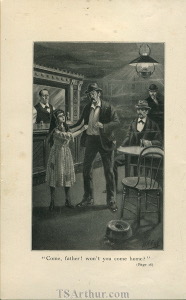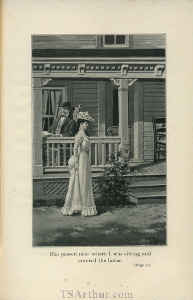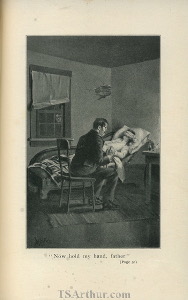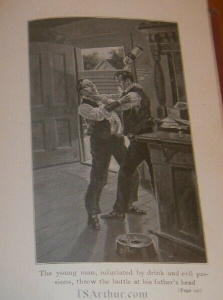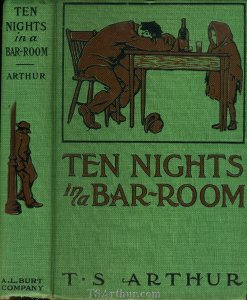Ten Nights in a Bar-Room Illustrations
Scholarly articles have been written about the significance of
the different illustrations in this book. Generally, the
conclusions are meaningless because nobody really knows what
Arthur's thinking was. And there is nowhere that the publisher's
motives are explained.
What I intend to do is show the various illustrations with the
time line. This page does not include any pictures of magic
lantern slides.
Frontispieces:
The first edition published by Lippincott, Grambo & Co. in
1854 and several early 1854 reprints had two frontispieces drawn
by William Van Ingen.
Sickle and Sheaf
|
Come Home Father
|
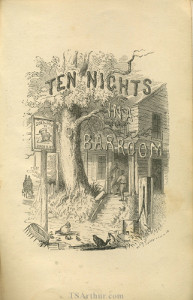 |
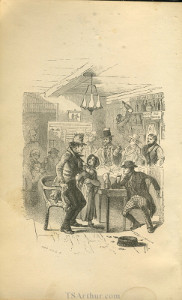 |
Later in 1854 until 1860 the Sartain mezzotint was the
frontispiece. It did not appear after 1860.
Some of the later reprints of the 1890's and 1900's had portraits
of Arthur as the frontispiece.
The first internal illustrations were in John E. Potter & Co.
editions (Potter illustrations) in the early 1870's. There were
six in all. Many books from this era moved the Van Ingen "Come
Home Father" internally as well. The Porter & Coates book of
the 1880's are an example.
The "Huzza" picture was occasionally the frontispiece and the only
illustration in a number of the Henry Altemus reprints in the
early 1900's.
"Ten Nights" which was part of the Good-Will Library published by
the Revolution Temperance Publishing House in the early 1880's has
eight illustrations.
The two Van Ingen illustrations are present. The "Sickle and
Sheaf" is on the cover and "Come Home Father" is internal. In
addition an artist, K. A. L., did six internal drawings using the
Potter illustrations as a basic template.
Van Ingen
|
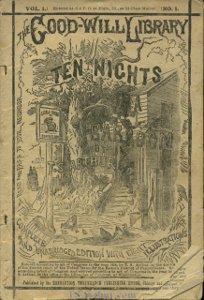 |
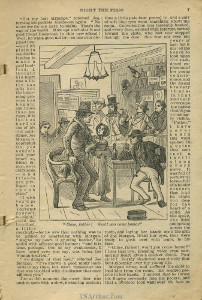 |
| |
Edith Foote Upham did the illustrations (Upham illustrations) for
several of the reprint publishers (Hurst and Lupton most
importantly) in the 1890's and 1900's. There was a new
frontispiece as well as four internals. Interestingly two of
Upham's pictures have the same captions as the Potter's and were
designed to capture the same events. But the depictions are quite
different.
In 1898 John Anderson Pub. Co. from Chicago published a copy of
this book in Norwegian. The illustrations are modified copies of
the Potter six.
In comparing them side by side, slight differences can be
appreciated.
The David Cook Publishing Co. printed a copy of "Ten Nights" in
December, 1898 as #9 in its "New Sabbath Library". Two formats
have been seen: Cloth and in wraps. These books include the six
Potter illustrations plus an internal Van Ingen "Come Home
Father". The wraps' cover has a different and unique picture of
the Sickle and Sheaf.
F. M. Lupton published "Ten Nights" as #145 in its Arm Chair
Library in about 1902. This paperback book had only a cover
illustration: Joe Morgan with his daughter. This picture does not
appear in any other "Ten Nights" book.
At the turn of the century H. M. Caldwell Company published this
title in a number of its publisher's series. Many of its books had
a portrait of Arthur as a frontispiece and four illustrations not
previously seen. The scenes shown in these pictures had not been
illustrated in the earlier books.
J. S. Ogilvie Publishing Company published "Ten Nights" in
multiple series. These books did not have any internal pictures.
The 1902 copy below is #214 in the Sunset Series and does have an
illustration on the cover. I suspect it was meant to be book
appropriate.
The Saalfield Publishing Company published "Ten Nights" in 1903.
Its copy had four glossy illustrations drawn by W. H. Fry.
John C. Winston Company published "Ten Nights" initially in its
Every Boys Library in 1906.
The frontispiece is Van Ingen's "Come Home Father". Potter's
"Huzza" and "Joe Morgan's Child" were seen in my copy. Whether
other copies/editions have all six of the Potter pictures is
unknown.
A. L. Burt Company published a number of reprints in the 20th
century. The books, when illustrated, had the Potter pictures and
in some books the Van Ingen “Come Home Father” as a frontispiece.
Burt's Home Library was a large multivolume, multi-author library
which at its peak consisted of hundreds of titles (500 at its
peak) from all areas of literature. It was first published in 1892
and continued until the 1920's. "Ten nights" was first part of
this series in about 1899 and was phased out by the early 1920’s.
These books are blindstamped with gold gilt lettering on the
spine. 12mos. Pre-1902 volumes note that A.L. Burt not A. L. Burt
Company as the publisher.
(Post-1902 Edition)
|
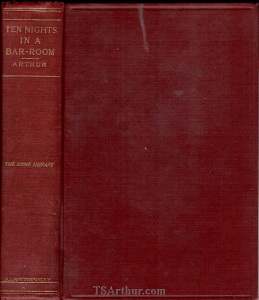 |
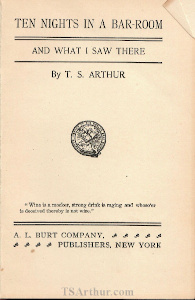 |
Unique to this company however is one format which has a book
cover specific illustration. This volume is part of the Oxford
Series of 12 mos. and was published in the 1920's.


